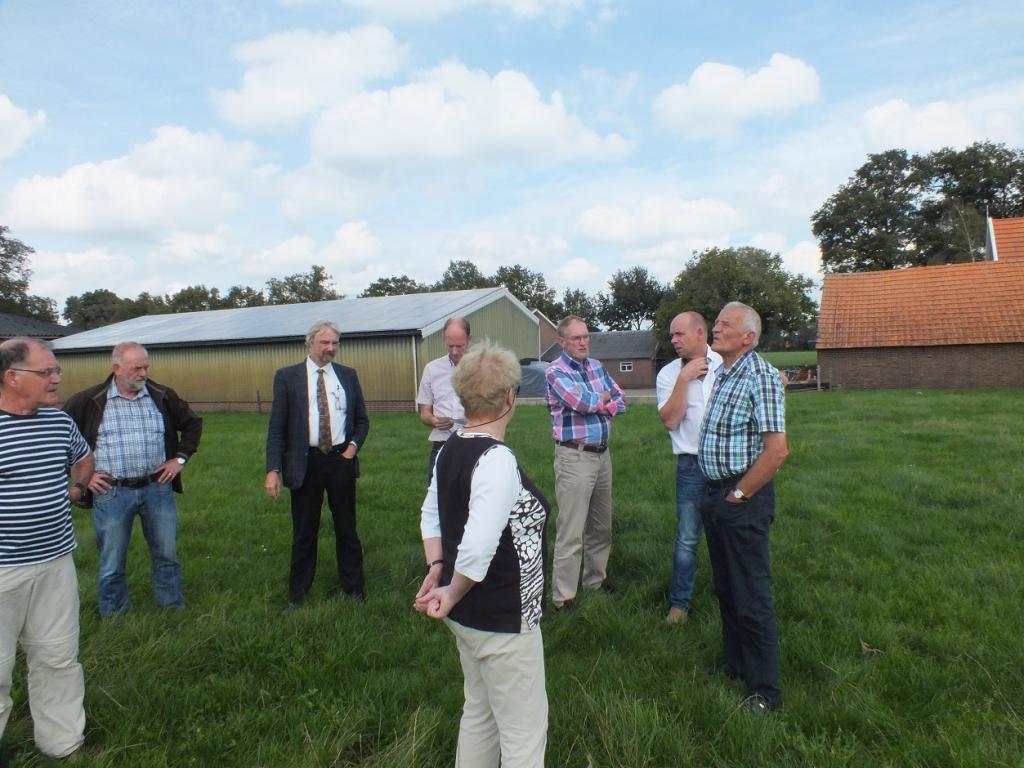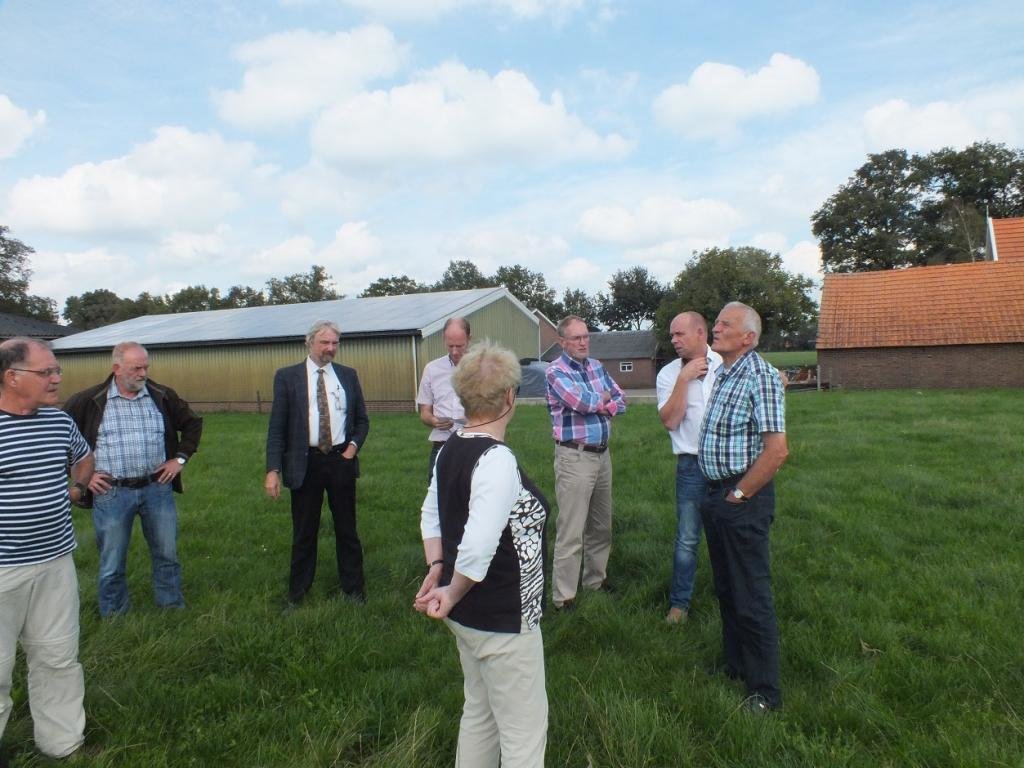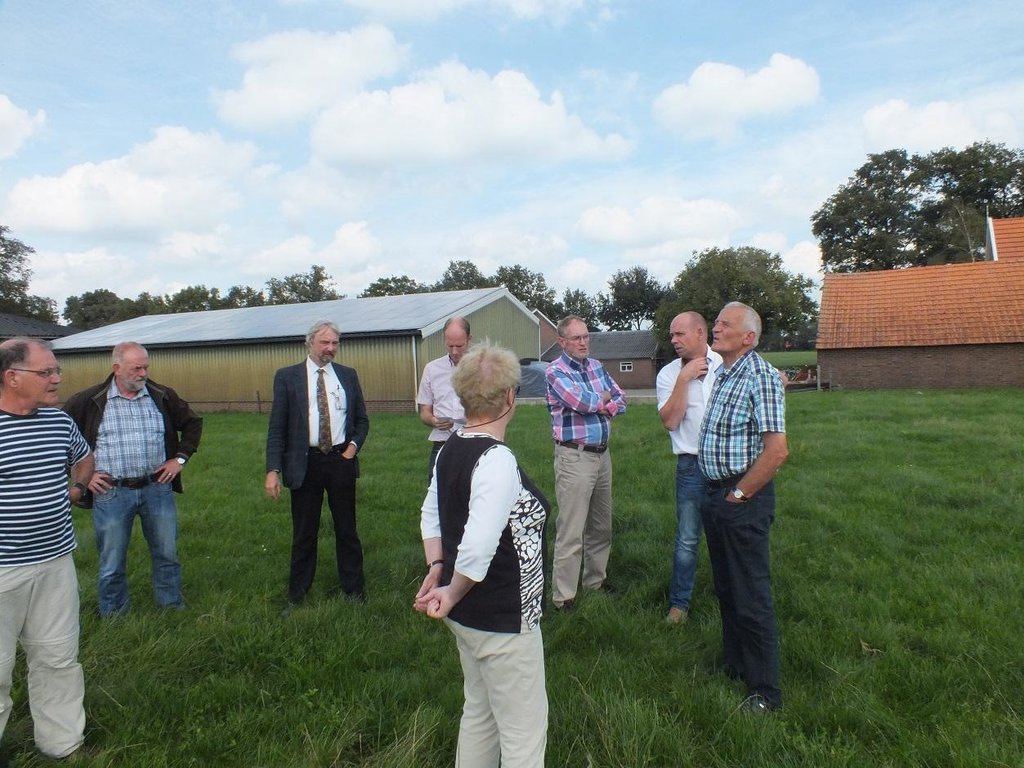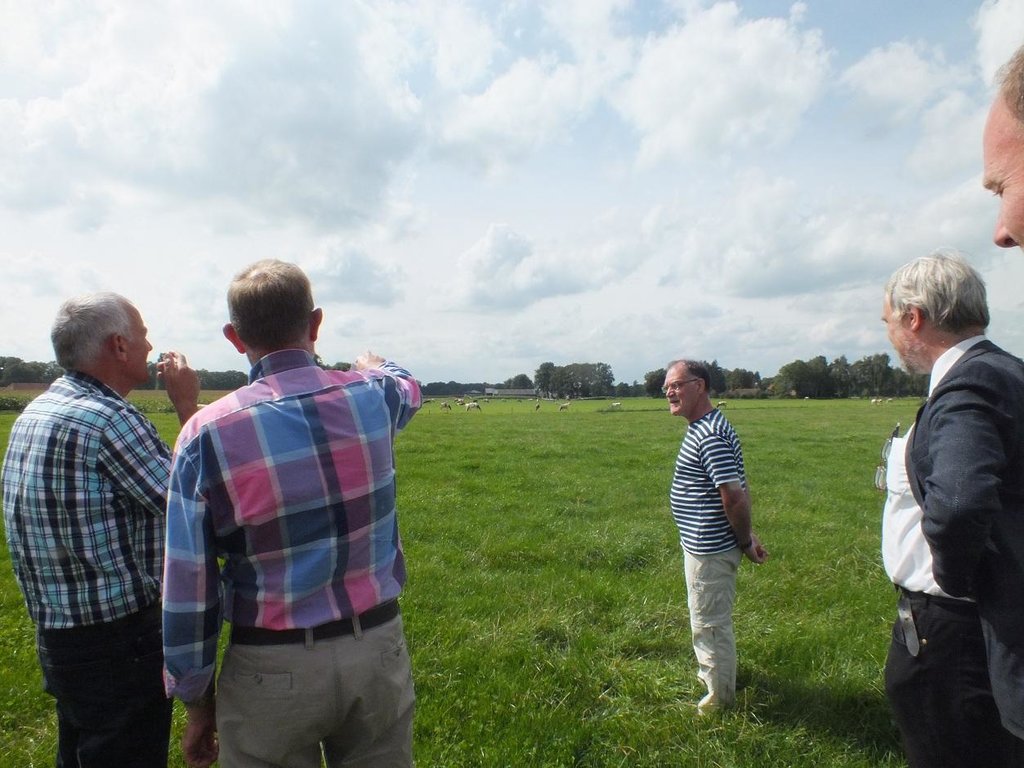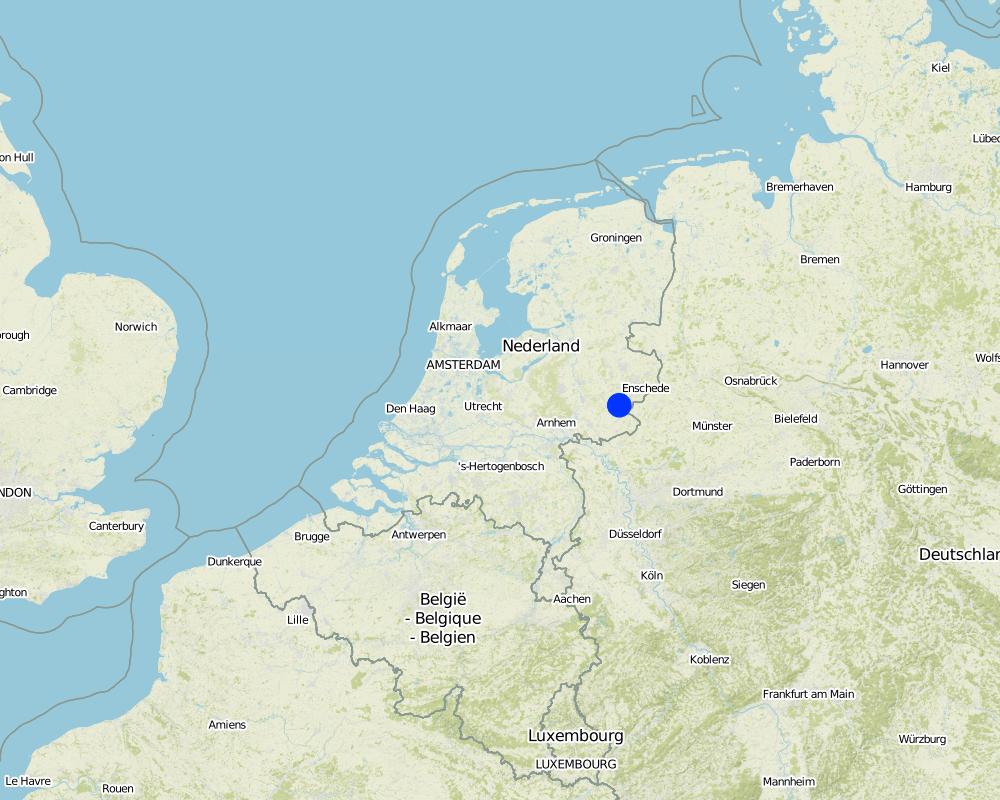Regional process, social innovation [Netherlands]
- Creation:
- Update:
- Compiler: Simone Verzandvoort
- Editor: –
- Reviewer: Fabian Ottiger
Gezond Zand aanpak (Dutch)
approaches_2523 - Netherlands
View sections
Expand all Collapse all1. General information
1.2 Contact details of resource persons and institutions involved in the assessment and documentation of the Approach
SLM specialist:
Smit Annemieke
Alterra-Wageningen UR
Netherlands
SLM specialist:
Rienks Willem
ROM3D
Netherlands
Name of the institution(s) which facilitated the documentation/ evaluation of the Approach (if relevant)
Wageningen Environmental Research (Alterra) - NetherlandsName of the institution(s) which facilitated the documentation/ evaluation of the Approach (if relevant)
Hoe Duurzaam - NetherlandsName of the institution(s) which facilitated the documentation/ evaluation of the Approach (if relevant)
Provincie Gelderland - NetherlandsName of the institution(s) which facilitated the documentation/ evaluation of the Approach (if relevant)
ROM3D - NetherlandsName of the institution(s) which facilitated the documentation/ evaluation of the Approach (if relevant)
Ministerie van Economische Zaken - Netherlands1.3 Conditions regarding the use of data documented through WOCAT
When were the data compiled (in the field)?
18/09/2014
The compiler and key resource person(s) accept the conditions regarding the use of data documented through WOCAT:
Ja
1.4 Reference(s) to Questionnaire(s) on SLM Technologies
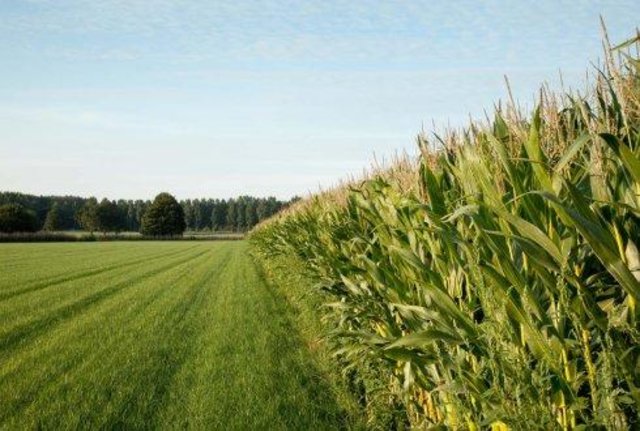
Postpone grassland renewal [Netherlands]
Postponing the timing of ploughing a grassland field by one or two years to reduce nutrient losses and organic matter decomposition.
- Compiler: Jason Stuka
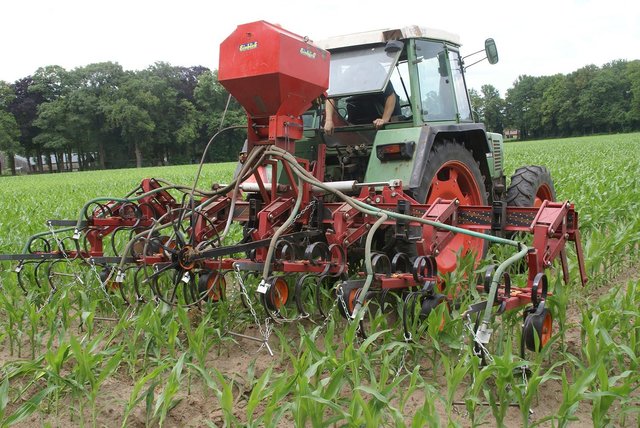
Intercropping of grass and corn to increase soil … [Netherlands]
Grass intercropping on corn fields
- Compiler: Jason Stuka
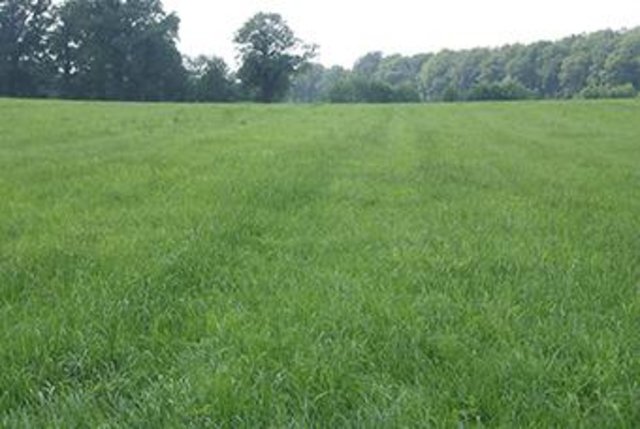
Humic acid application [Netherlands]
Humic acid application is a technology that allows the farmer to supply organic matter to the soil, without supplying additional nitrogen and phosphorus.
- Compiler: Jason Stuka
2. Description of the SLM Approach
2.1 Short description of the Approach
Social innovation for sustained soil organic matter, clean drinking water and sustainable crop production
2.2 Detailed description of the Approach
Detailed description of the Approach:
Aims / objectives: A group of farmers cooperates with the drinking water company and aims for a more healthy soil. The sandy soil is low in organic matter. They expect that increasing the soil organic matter content will retain more nitrates in the soil, leading to a reduction in nitrate leaching and a higher nutrient availability for the crops.
Dairy farms grow grass and corn. Some farmers also produce potatoes and cereals.
Most farms deal with suboptimal moisture conditions. Increasing the soil organic matter content and improving the soil structure is expected to be a key factor in improving soil moisture content, both in dry and wet periods.
For most farmers soil biodiversity is terra incognita. During the project they will learn about the advantages of good soil fauna and how it can add to better crops.
The case study will explore management options to increase and maintain organic matter content in soil via different rotations, specific varieties of grasses and corn, cover crops and additions of organic amendments and fertilizers. Although the case study is about soil management and technology to improve soil quality, social innovation is a key objective: combining knowledge and experience of a group of neighbours and farmers within a small region and developing solutions and opportunities for the whole area.
Methods: lectures, site visits, group sessions with models (computer sessions), kitchen table interviews (interactive advice), providing relevant literature
Stages of implementation: fund raising - building support - knowledge transfer - pilots of measures - applied expert advice - launch of the foundation HOE Duurzaam - implementation of new measures - increase of nr of participants - field excursion - closing event of the project 'gezond Zand'
Role of stakeholders: Pioneer farmers : initiating and leading the project, fouding HOE Duurzaam
Other farmers : participating, implementing measures, sharing experience
VITENS Drinking water company: providing money and urgency
ROM3d : project leader, motivating farmers, intermediate between area and government
ALterra, Wageningen UR: providing knowledge
Other important information: An adjustment in the national regulations for manure application was an important driving factor for the development of the approach. Farmers were authorised to apply more manure per ha if they have 75% of their land under grassland. This criterion changed to 80% during the implementation of the approach.
2.3 Photos of the Approach
2.5 Country/ region/ locations where the Approach has been applied
Country:
Netherlands
Region/ State/ Province:
Netherlands, Gelderland
Further specification of location:
Municipality of Berkelland
Map
×2.6 Dates of initiation and termination of the Approach
Indicate year of initiation:
2011
Year of termination (if Approach is no longer applied):
2014
2.7 Type of Approach
- recent local initiative/ innovative
2.8 Main aims/ objectives of the Approach
The Approach focused mainly on SLM with other activities (energy, landscape conservation, recreation, drinking water)
The main aims and objectives of the approach were social innovation and social learning with regard to sustainable management of the land in the area. This implied combining knowledge and experience from scientists, neighbours and other farmers. The final goals are to improve soil quality, soil organic matter status and groundwater quality.
The SLM Approach addressed the following problems: Decreasing yields, problems with management (water logging, increased irrigation requirements), changed regulation ('manure derogation') that suppressed agricultural production; drinking water production expected problems with nitrate in the groundwater.
2.9 Conditions enabling or hindering implementation of the Technology/ Technologies applied under the Approach
availability/ access to financial resources and services
- hindering
The device to separate manure in thick and thin fractions could not have been purchased by an individual farmer.
Treatment through the SLM Approach: The foundation purchased the device.
legal framework (land tenure, land and water use rights)
- enabling
The existing land ownership, land use rights / water rights greatly helped the approach implementation: Ownership made farmers stakeholder, rented land is treated less carefully; renting farmers are less motivated to change their land mmanagement.
- hindering
The exchange of manure between farms in order to comply with manure regulations is not allowed by law.
Treatment through the SLM Approach: The approach searches possibilities to consider the project area as a single enterprise unit for complying with the manure regulation.
knowledge about SLM, access to technical support
- hindering
Grass undersowing is technically complicated to implement, due to the damage that could be brought to the standing crop.
Treatment through the SLM Approach: Skilled agricultural contractors were hired by the farmers jointly; the concern was releived from the individual farmers.
3. Participation and roles of stakeholders involved
3.1 Stakeholders involved in the Approach and their roles
- local land users/ local communities
land users and the Foundation HOEduurzaam
Land users not member of the Foundation, but interested to learn from the project. Foundation HOEduurzaam; 98% of the land is owned by members of the Foundation. Agricultural enterprises in the area are mainly run by men. Knowledge is exchanged a.o. during hunting activities. Mainly men attended the lectures and interactive sessions. 3 women attended in the three year period.
- SLM specialists/ agricultural advisers
Experts the drinking water company Vitens, the fertiliser companu Triferto, the Louis Bolk research Institute (agronomy) and from Wageningen UR (agronomy, plant production and soil science)
- private sector
Vitens Drinking Water Company
- local government
Municipality of Berkenwoude
- national government (planners, decision-makers)
Province of Gelderland
From the Water board Vechstromen, Municipality Berkelland, Province of Gelderland. Mayor and counseller of the community Berkelland, Deputy of the Province of Gelderland, Ministry of Economic Affairs
- the foundation HOEDuurzaam
HOEDuurzaam. Drinking water company Vitens, agricultural nature association, cultural landscape heritage association
If several stakeholders were involved, indicate lead agency:
The approach was designed jointly by national SLM specialists from the consultancy firm ROM3D and Alterra, the land users and the Foundation HOEduurzaam (representing land users, entrepreneurs and citizens in the area). The application for funding at the Province was made by one of the land users on behalf of the land users.
3.2 Involvement of local land users/ local communities in the different phases of the Approach
| Involvement of local land users/ local communities | Specify who was involved and describe activities | |
|---|---|---|
| initiation/ motivation | self-mobilization | 8 land users submitted the application for funding to the Province to implement the measures |
| planning | interactive | Due to the interactive nature of the project there was no official planning. There was a sequence of knowledge supplied, testing in pilots, assess outcomes, renewed pilots and implementation of measures proven succesfull. |
| implementation | self-mobilization | |
| monitoring/ evaluation | interactive | |
| Research | external support | Lectures from external advisors (Peter Kuikman, Coen ter Berg, Jos Groten (Wageningen UR-PPO), Annemieke Smit (Wageningen UR-Alterra), Zwier van der Vechte (Wageningen UR Livestock Research) and calculation sessions with the HLB tool. |
3.4 Decision-making on the selection of SLM Technology/ Technologies
Specify who decided on the selection of the Technology/ Technologies to be implemented:
- mainly land users, supported by SLM specialists
Explain:
The land users took the final decisions in their selection of SLM technologies and measures. The SLM specialists contributed by giving information and advice.
Decisions on the method of implementing the SLM Technology were made by mainly by land users supported by SLM specialists
4. Technical support, capacity building, and knowledge management
4.1 Capacity building/ training
Was training provided to land users/ other stakeholders?
Ja
Specify who was trained:
- land users
If relevant, specify gender, age, status, ethnicity, etc.
male farmers aged between 30 and 60
Form of training:
- farmer-to-farmer
- demonstration areas
- courses
Form of training:
- advisory sessions between land users and SLM advis
Subjects covered:
fertilisation, soil fertility, crop management
4.2 Advisory service
Do land users have access to an advisory service?
Ja
Specify whether advisory service is provided:
- on land users' fields
Describe/ comments:
Name of method used for advisory service: 'zitdagen'; advisory sessions between land user and consultant; Key elements: problem analysis: which fields have the largest problems and why? training sessions with the computer tool for selection of measures to improve OM status, meetings for knowledge exchange; There was also a questionnaire to inventory the measures farmers wanted to implement.
Advisory service is quite adequate to ensure the continuation of land conservation activities; The Foundation HOEduurzaam will support the continuation of SLM activities in the area.
4.3 Institution strengthening (organizational development)
Have institutions been established or strengthened through the Approach?
- yes, a little
Specify the level(s) at which institutions have been strengthened or established:
- local
Specify type of support:
- financial
- capacity building/ training
- marketing
Give further details:
Foundation HOEduurzaam has small financial revenues from their activities. Campsite Veldzicht rented their accommodation several times for venues of the land users and stakeholders, and will benefit from publicity around the approach to attract more visitors.
4.4 Monitoring and evaluation
Is monitoring and evaluation part of the Approach?
Ja
Comments:
bio-physical aspects were ad hoc monitored by project staff through observations; indicators: pictures of development of grass undersowing and crops
bio-physical aspects were ad hoc monitored by land users, other through measurements; indicators: land users should measure OM every 4 years to get subsidies; constituents of the groundwater used to produce drinking water
There were no changes in the Approach as a result of monitoring and evaluation: The approached worked well, so there were no changes until now.
There were few changes in the Technology as a result of monitoring and evaluation: Several technologies were abandoned or could not be implemented: substituting crops in rotations (less potatoes, early germinating maize varieties), use of roadside rsidues as compost (due to legal constraints)
Humic acid was implemented at more fields after the first optimistic results. The early harvest of corn was not implemented, but sowing grasss underneath the corn was developed during the project.
4.5 Research
Was research part of the Approach?
Ja
Specify topics:
- economics / marketing
- technology
Give further details and indicate who did the research:
economics/marketing: cost-benefit analysis still to be performed - ROM3D and Alterra and Foundation HOEduurzaam
technology: continued search for new methods and measures; mapping the status of soil organic matter and soil organic matter balance calculations with a tool - Alterra, ROM3 and Foundation HOEduurzaam
Research was carried out both on station and on-farm
5. Financing and external material support
5.1 Annual budget for the SLM component of the Approach
If precise annual budget is not known, indicate range:
- 10,000-100,000
Comments (e.g. main sources of funding/ major donors):
Approach costs were met by the following donors: international (European Fund for Rural Development and the EU FP7 RECARE project): 5.0%; government (Ministry of Economic Affairs ): 40.0%; private sector (Vitens drinking water company): 10.0%; local government (district, county, municipality, village etc) (Province of Gelderland (100-350 €/ha) - subsidy regulation for sustainable soil management): 35.0%; local community / land user(s) (labour, time investment, seeds, materials): 5.0%; other (own contributions research and consultancy firms (Alterra, ROM3D)): 5.0%
5.2 Financial/ material support provided to land users
Did land users receive financial/ material support for implementing the Technology/ Technologies?
Ja
5.3 Subsidies for specific inputs (including labour)
- equipment
| Specify which inputs were subsidised | To which extent | Specify subsidies |
|---|---|---|
| machinery | partly financed | Manure separator |
- agricultural
| Specify which inputs were subsidised | To which extent | Specify subsidies |
|---|---|---|
| seeds | partly financed | |
| Human acids | partly financed | |
Comments:
payments were meant to cover potential costs of reduced crop yield and the agricultural contractor (loonwerker)
5.4 Credit
Was credit provided under the Approach for SLM activities?
Nee
6. Impact analysis and concluding statements
6.1 Impacts of the Approach
Did the Approach help land users to implement and maintain SLM Technologies?
- No
- Yes, little
- Yes, moderately
- Yes, greatly
Farmers are more concerned about soil and organic matter, they understand that they have options to improve and make choices in implementation of measures. Some measures need coordination at the aera level (e.g. the use of goat manure and roadside residues), those were not implemented yet, but small scale mearsures are becoming more common.
Did the Approach empower socially and economically disadvantaged groups?
- No
- Yes, little
- Yes, moderately
- Yes, greatly
no socially and economically disadvantaged groups in this area
Did the Approach improve issues of land tenure/ user rights that hindered implementation of SLM Technologies?
- No
- Yes, little
- Yes, moderately
- Yes, greatly
Ownership of the land made it possible for the farmers to decide what management was implemented. Hindering: when fields were rented by farmers outside the area/project, poor management of the soil decreased the soil organic matter content.
Did other land users / projects adopt the Approach?
- No
- Yes, little
- Yes, moderately
- Yes, greatly
Did the Approach lead to improved livelihoods / human well-being?
- No
- Yes, little
- Yes, moderately
- Yes, greatly
Farmers learned about how others are working and they met more regularly in an informal setting.
Did the Approach help to alleviate poverty?
- No
- Yes, little
- Yes, moderately
- Yes, greatly
Poverty does not occur in the area.
6.2 Main motivation of land users to implement SLM
- increased production
The dairy farmer's income is under pressure due to the low milk price.
- increased profit(ability), improved cost-benefit-ratio
Farmers realise that in the long term, declining soil organic matter will reduce production.
- rules and regulations (fines)/ enforcement
Stricter manure regulation under the CAP forces farmers to manage organic matter efficiently.
- affiliation to movement/ project/ group/ networks
Farmers are interested to learn improvements for farm management from other farmers.
- environmental consciousness
Farmers care for their land and animals. Also for good quality groundwater.
6.3 Sustainability of Approach activities
Can the land users sustain what has been implemented through the Approach (without external support)?
- yes
If yes, describe how:
The Foundation HOEduurzaam will continue to act in the area. For the next 10 years measures will be part
of the subsidy grant.
6.4 Strengths/ advantages of the Approach
| Strengths/ advantages/ opportunities in the land user’s view |
|---|
| Farmers are positive about the information provision on the measures in the informatoin sessions, by their mutual exchange of information, and through the direct contact with experts. They expect the measures to increase the soil organic matter and yields, also through an improved bearing capacity of the soil. (How to sustain/ enhance this strength: Continued exchange of information on measures to increase SOM between the farmers themselves, subsidy to finance the measures (either through the regional government or the dairy company).) |
| Strengths/ advantages/ opportunities in the compiler’s or other key resource person’s view |
|---|
|
1. social innovation by working together and learning from each other 2. HOEduurzaam (foundation) represents 98% of the land owners and land users in the area, and is an important stakeholder for the local /regional goverment 3. all training was specifically designed for the group 4. HOEduurzaam is also active in the Energie-marke, a local renewable energy cooperative (How to sustain/ enhance this strength: continuing the approach, Foundation HOEduurzaam remaining active, follow-up projects to monitor effects of measures to stimulate farmers to continue to implement the measures. ) |
6.5 Weaknesses/ disadvantages of the Approach and ways of overcoming them
| Weaknesses/ disadvantages/ risks in the land user’s view | How can they be overcome? |
|---|---|
| No disadvantages to the approach were mentioned by the land users. | not applicable |
| Weaknesses/ disadvantages/ risks in the compiler’s or other key resource person’s view | How can they be overcome? |
|---|---|
|
1. support of the measures by consultants was only 2 years, whereas the effects on SOM are only perceptable after 10 years 2. Foundation HOEduurzaam does not have a soil expert |
Bring attention to production and water use. |
7. References and links
7.1 Methods/ sources of information
- field visits, field surveys
- interviews with land users
7.2 References to available publications
Title, author, year, ISBN:
website of the Foundation HOEduurzaamW.A. Rienks en H. Leever, 2014. Gezond Zand – organische stof als sleutel voor een vruchtbare bodem en schoon water.
Available from where? Costs?
http://www.hoeduurzaam.nl http://www.hoeduurzaam.nl/images/gallery/nieuws/Brochure/BrochureHoeduurzaam%20Definitief.pdf
Title, author, year, ISBN:
W.A. Rienks en H. Leever, 2014. Gezond Zand – organische stof als sleutel voor een vruchtbare bodem en schoon water.
Available from where? Costs?
http://www.hoeduurzaam.nl/images/gallery/nieuws/Brochure/BrochureHoeduurzaam%20Definitief.pdf
Links and modules
Expand all Collapse allLinks

Postpone grassland renewal [Netherlands]
Postponing the timing of ploughing a grassland field by one or two years to reduce nutrient losses and organic matter decomposition.
- Compiler: Jason Stuka

Intercropping of grass and corn to increase soil … [Netherlands]
Grass intercropping on corn fields
- Compiler: Jason Stuka

Humic acid application [Netherlands]
Humic acid application is a technology that allows the farmer to supply organic matter to the soil, without supplying additional nitrogen and phosphorus.
- Compiler: Jason Stuka
Modules
No modules


